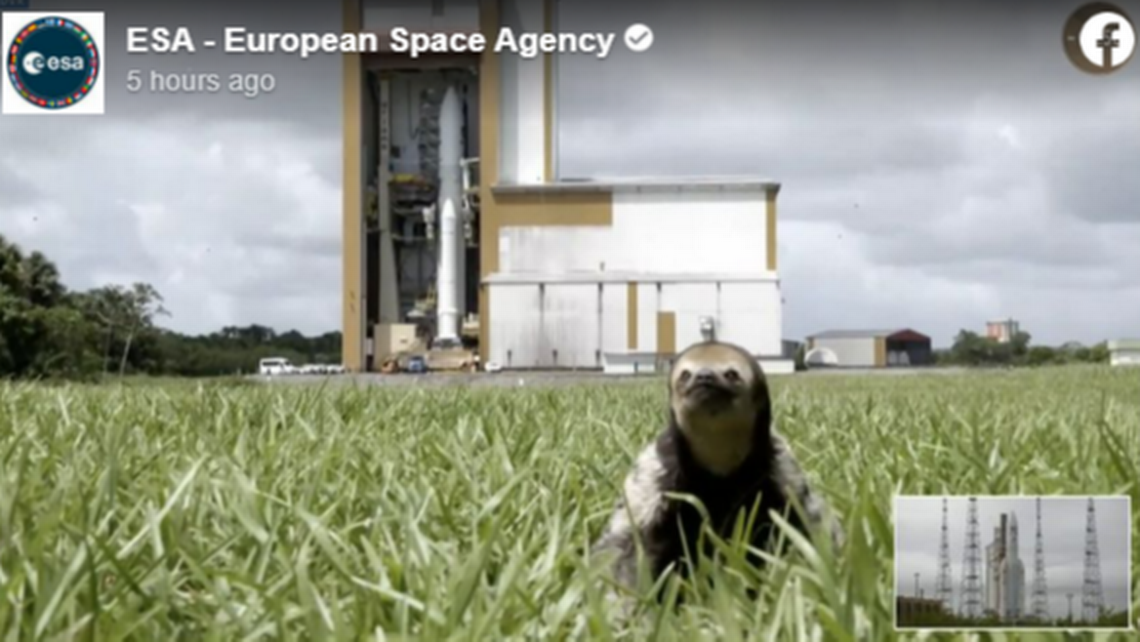Sloth interrupts livestream and becomes ‘the star’ during rocket launch to Jupiter

A photo-bombing sloth interrupted the livestream of a rocket launch to Jupiter from French Guiana and stole the hearts of viewers.
The fuzzy creature sat in tall grass at eye level with the camera. It appeared to be gazing just past the camera as a rocket was poised for launch behind it.
“Aside from the actual launch, this guy is definitely the star of (the European Space Agency’s ...) telecast,” Dr. Nadia Drake, physics editor of Quanta Magazine, said in a Facebook post on the European Space Agency’s page.
JUICE, which stands for Jupiter Icy Moons Explorer, is the name of the mission, which launched from French Guiana, a small country in northern South America, just before 2:15 p.m. on April 14, according to the European Space Agency.
The mission is set to explore Jupiter’s environment and below the surface of its icy moons, according to the agency.
Jupiter has between 80 and 95 moons, one of which, Europa, is considered one of the “best places to look for life beyond Earth in our solar system” because it has a salty ocean beneath its shell of ice, according to NASA.
The JUICE mission is expected to arrive at Jupiter by July 2031, according to the European Space Agency.
But many people viewing the livestream of the launch were more interested in the certain earthly animal enjoying his moments of fame.
Internet users even named the sloth Gérard — or Jerry for short — and created hashtags such as #gojerry and #ohhurryupjerry.
“How did he get there?” one commenter wrote on the European Space Agency’s Facebook post. “I have questions.”
“He just wanted to go hang around in space,” wrote another.
“I thought it was a penguin,” another person said.
Even the space agency itself admitted that the sloth stole the show.
“Although we were focusing on a certain rocket and spacecraft, we tend to agree,” the agency wrote.
Forget ‘man on the moon.’ There’s a bear on Mars — and these NASA photos prove it
What time is it on the moon? Scientists want to create a ‘shared’ lunar clock
Giant space doughnut? New NASA mapping reveals longstanding mysteries of iconic nebula


